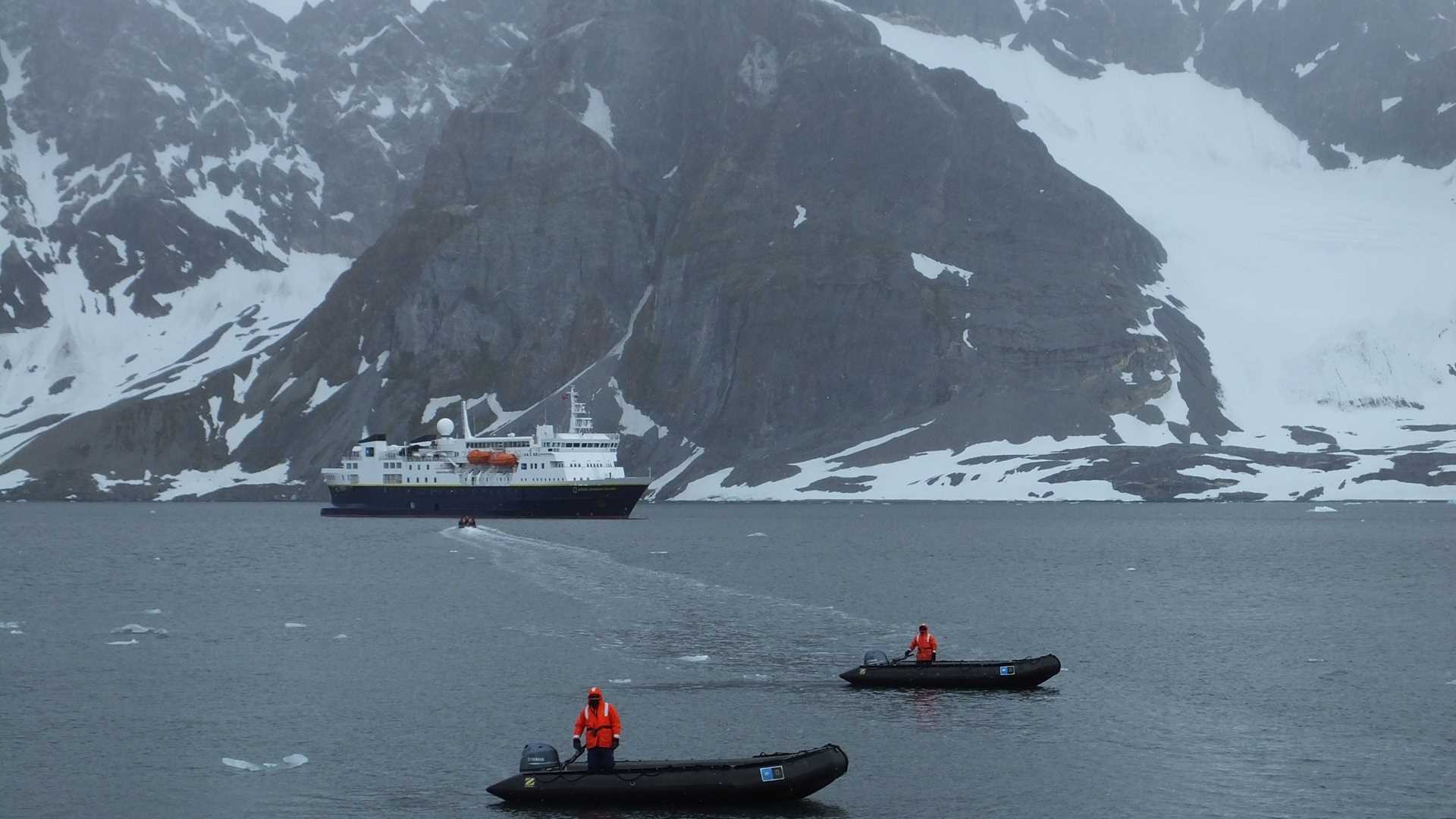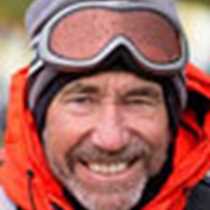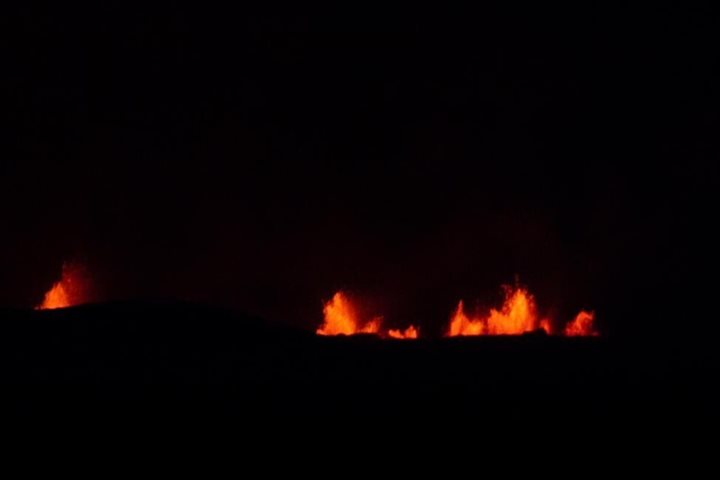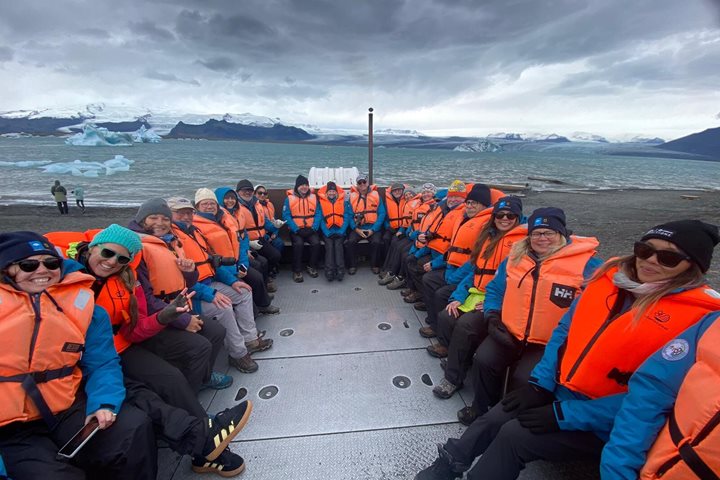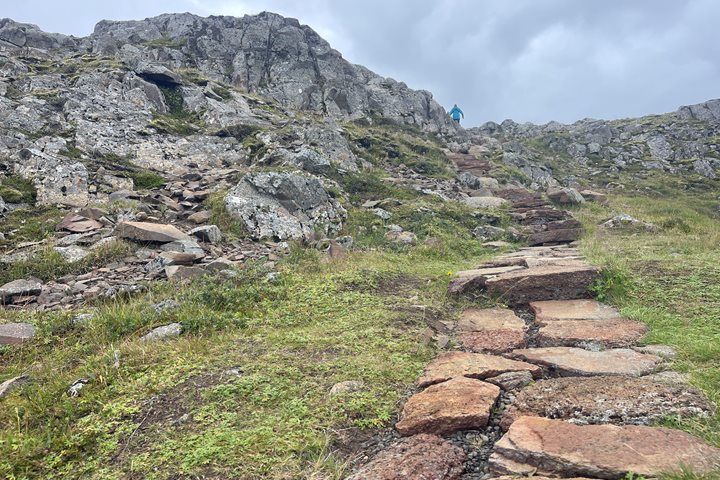Last night the National Geographic Explorer left the Island of Edgeøya and headed south. We experienced our first bit of rocking and rolling since we started the expedition, which caught a few guests unaware as they hadn’t had chance to develop their sea legs just yet! But once we’d turned around Sørkapp the motion settled and everyone enjoyed a peaceful night’s sleep.
When we first woke up this morning the weather was overcast and windy, with some snow inside Hornsund fjord. We were originally planning on landing on the south-west coast of Hornsund but as the wind was blowing directly on to the shore, the captain decided to sail further into the fjord to land at the foot of Paierlbreen glacier, which flows straight into Burgerbukta (77-04.6N, 015-59.9W). The scenery here was spectacular, with high cliffs rising straight out of the fjord on the west side, and a number of glaciers tumbling into the fjord from the north.
We landed on a small spit of land near the foot of the glacier edge and split into different walking groups. There was a choice of three different long walks, one medium walk, one short walk and a photo walk. For those who didn’t want to go ashore, a Zodiac tour took them to the face of the glacier.
Who could not be moved when out among such stunning scenery? The walkers all managed to get wonderful views of the glacier front and have a good stretch of the legs. The occasional boom of calving ice added an additional layer of majesty to the morning. The long hikers saw polar bear scat high up on the lateral moraine, which acted to further endorse our constant vigilance as we walked in the area. Some Arctic terns insisted, vocally and forcefully, that some of the walking groups should revise their route!
After lunch the ship made its way northwards towards Bellsund. While we sailed Kasper Jaeger, one of the naturalists who lives and works on Svalbard, gave a presentation about trapping on the archipelago and how it is a practice that is still carried out today.
We arrived in Bellsund by late afternoon and dropped anchor close to the Midterhuken cliffs at the end of Nathorst Land. No sooner had the anchor touched the bottom than the Zodiacs were launched. Guests were taken on a cruise along the bay beneath the cliffs, which were teeming with nesting birds. The sky was full of thick-billed murre and kittiwakes as they whirled around the cliffs, heading out to sea to feed or returning to their nests. Great skuas and glaucous gulls patrolled the area looking for a meal. We also saw a brown Arctic fox hunting high up on the ledges, flocks of common eider and gaggles of barnacle geese in the bay and a few black guillemots.
We bid Svalbard and all of its rugged beauty and amazing wildlife a fond farewell before we headed south west for the next stage of our adventure aboard the National Geographic Explorer.

